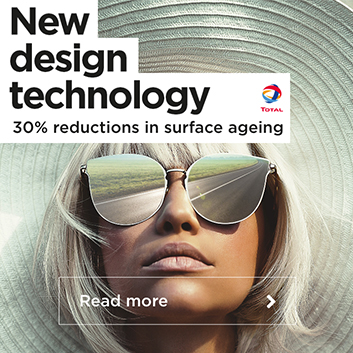ULTILAYER SAMI is a crack resisting asphalt interlayer for concrete based roads.
Over 1,200km of concrete pavement are thought to be in use on National Highways' strategic road network, with an even greater length in existence across the local authority network.
The thin asphalts used to overlay this concrete frequently suffer from reflective cracking caused by thermal expansion in the underlying concrete and the effects of traffic loading. This cracking eventually leads to water ingress and failure, requiring costly remedial work and causing delays for road users.
To meet this challenge Tarmac has introduced a high performance asphalt stress absorbing membrane interlayer (SAMI) that is proven to resist these stresses, for long-term protection of the asphalt overlay.
ULTILAYER SAMI is a Stress Absorbing Membrane Interlayer (SAMI) for concrete overlays.
Where can ULTILAYER SAMI be used?
Preventing cracking on concrete based motorways, dual carriageways and estate roads
ULTILAYER SAMI offers a solution to traffic and thermally induced cracking in concrete based roads including motorways, dual carriageways and estate roads.
Preventing cracking on concrete based car parks and industrial estates
As a solution to cracking of concrete overlays on commercial and industrial sites, ULTILAYER SAMI can help deliver a longer lasting surface for HGV traffic.
ULTILAYER SAMI can be used as alternative to Geogrid for crack prevention
As an alternative to using geogrid, ULTILAYER SAMI is laid with a conventional paving machine. It can also be removed by standard cold planing and fully recycled at the end of the pavement's life.
Why use ULTILAYER SAMI?
Additional info
ULTILAYER SAMI (Stress Absorbing Membrane Interlayer) is a fine graded asphalt containing a high proportion of premium Polymer Modified Binder (PMB). It is typically laid 25mm thick and is designed to offer exceptional flexibility. When tested by University of Nottingham’s Nottingham Transport Engineering Centre (NTEC) as part of a wider investigation into SAMI performance, ULTILAYER SAMI was shown to have fatigue resistance properties over 200 times better than conventional asphalt.
Reflective cracking in asphalt laid over jointed concrete is caused by tensile stresses created by movement of the slab joints. This is a combination of both thermal movement in the concrete slabs as the pavement heats up and cools down and traffic induced movement.
Traffic induced movement
As heavy vehicles move across from one slab to the next, this creates vertical differential movement which again stresses the asphalt overlay. The resulting tensile stress moves between the top and bottom of the asphalt layer creating the odd situation where both ‘bottom up’ and 'top down' cracking can in theory both be attacking the asphalt. To counter this Tarmac recommends that a high performance PMB is used in all critical layers over jointed concrete which includes the surface course.
Thermal movement
As the slabs in a jointed concrete pavement heat up and cool down they expand and contract. This movement is naturally concentrated at the slab joints, and is transferred to the asphalt at these points creating localised tensile stress at the bottom of the asphalt overlay. This cyclical loading causes ‘bottom up’ cracks to develop in the asphalt. ULTILAYER SAMI is designed to provide exceptional flexibility, to reduce the transfer of these stresses to the asphalt above and therefore offset the development of reflective cracking.
ULTILAYER SAMI should be laid directly onto the concrete pavement where the tensile stresses induced by these movements are typically the highest and where conventional asphalt would quite rapidly develop cracking. It is best used where thermally induced ‘bottom up’ cracking dominates. It is also a valuable solution for lean mix based pavements where it can help prevent underlying movement from causing damage to the asphalt overlay.
Case studies
ULTILAYER SAMI Contact
Downloads
Download files individually or add multiple files to a zip folder.



